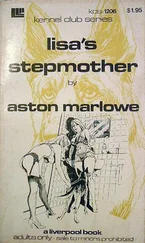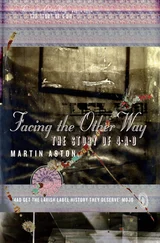William Aston - Shinto
Здесь есть возможность читать онлайн «William Aston - Shinto» — ознакомительный отрывок электронной книги совершенно бесплатно, а после прочтения отрывка купить полную версию. В некоторых случаях можно слушать аудио, скачать через торрент в формате fb2 и присутствует краткое содержание. Жанр: foreign_antique, foreign_prose, на английском языке. Описание произведения, (предисловие) а так же отзывы посетителей доступны на портале библиотеки ЛибКат.
- Название:Shinto
- Автор:
- Жанр:
- Год:неизвестен
- ISBN:нет данных
- Рейтинг книги:5 / 5. Голосов: 1
-
Избранное:Добавить в избранное
- Отзывы:
-
Ваша оценка:
- 100
- 1
- 2
- 3
- 4
- 5
Shinto: краткое содержание, описание и аннотация
Предлагаем к чтению аннотацию, описание, краткое содержание или предисловие (зависит от того, что написал сам автор книги «Shinto»). Если вы не нашли необходимую информацию о книге — напишите в комментариях, мы постараемся отыскать её.
Shinto — читать онлайн ознакомительный отрывок
Ниже представлен текст книги, разбитый по страницам. Система сохранения места последней прочитанной страницы, позволяет с удобством читать онлайн бесплатно книгу «Shinto», без необходимости каждый раз заново искать на чём Вы остановились. Поставьте закладку, и сможете в любой момент перейти на страницу, на которой закончили чтение.
Интервал:
Закладка:
The same writer says that of the attendant deities who came down from Heaven with Ninigi, some came in their real bodies, some as mitama . Among the former he naturally classes all those who are represented as having human descendants. Hirata regards this as a discovery which will endure to all ages.
The following quotation from Hirata's Koshiden (vi. 9) illustrates further the ideas of this school of theology regarding the spiritual nature of the Gods: -
"Both this God(Chigaheshi) and Kunado 17 were produced by the great mitama of the great God Izanagi applying itself earnestly to preventing the entrance into this world of the things coming furiously from the Land of Yomi, and which accordingly became separated from him and adhered to a staff and a stone. Remaining there, it (the mitama) did good service in both cases. These Gods, moreover, sometimes reveal their real bodies and dispense blessings. This may not be doubted. We find below that Kunado no Kami acted as a guide to Futsunushi; and that Chigaheshi no Oho-Kami was two deities distinguished as hiko and hime (prince and princess)."
Hirata thinks that Gods (and men too) have two doubles, the nigi-tama and an ara-tama mentioned above. These he distinguishes from the Zentai no mitama , or "spirit of the entire body." But he admits that these distinctions are not recognized in the old Shinto. There is no limit to the subdivision of the mitama . Hirata explains that the deity is like a fire, which may be communicated to a lamp or to firewood while the original fire remains the same. "But the world knows not this." In other words, this is a philosophic refinement too subtle for the popular taste.
While the old records rarely distinguish between the God's real body and his mitama , in later times the mitama is often confounded with the mitama-shiro (spirit-token), or shintai (god-body) as the concrete representative of the God is called. Even in the Nihongi there is a case in which a sword is called Futsu no mitama. The Kiujiki calls the mirror of the Sun-Goddess her mitama . The Shinto Miōmoku (1699) says that Futsu no mitama is the sword of the great deity of Kashima, and speaks of the Toyo-uka no mitama (the Food-spirit) as being, or residing in, a stone. Hirata himself calls a stone idol the mitama of the God, and speaks of the Sun-Goddess's mitama as going backward and forward between Ise and the sky. The unspiritual vulgar naturally find it hard to distinguish between the spirit of the God and its concrete representative.
The doctrine of the separability of the human body and soul, and of the continued existence of the latter after death, whether in a material or semi-material form, or as a pure spirit, may have been a factor in the spiritualizing of the cruder anthropomorphic conceptions of deity. But there is little or no evidence to this effect in the old Shinto scriptures, and the above pages show that other important influences were at work in producing this result. Whether the idea of God had its origin in the doctrine of separable human souls is a question which may be left to the discerning reader's judgment.
Gods of Classes and Qualities. – No language is possible without some exercise of the powers of generalization and abstraction. In Japanese, however, we miss many of the more general, and especially of the more abstract, conceptions embodied in European languages, a circumstance which limits the scope of the personifying faculty, none too vigorous in itself. Supposing that we take the series of conceptions beginning with the concrete individual tree, and passing through evergreen oak, oak, tree, and vegetable, to the definitive generalization of the universe. The Japanese language has no word for vegetable except sōmoku , a recent compound of Chinese origin. The word for universe is Ame-tsuchi (Heaven + earth) which is almost certainly a translation of the Chinese ten-chi . The consequence is that neither the class of vegetables nor the universe is recognized in the Japanese scheme of nature-deities. Individual trees are deified, and there is a God of trees, but that is all. The neglect of grammatical number in the Japanese language often obscures the distinction between the Gods of individual objects and of classes. Ki no Kami means equally the God of the tree and the God of trees. 18
There is a marked poverty of abstract terms in the Japanese language, and the personification of abstract qualities is correspondingly restricted. There is scarcely anything in Shinto to compare with the numerous personified abstractions of Greek and Roman mythology. Izanagi and Izanami, embodiments of the creative or generative powers of nature, are probably not originally Japanese, but an echo of the Yin and Yang of Chinese philosophy. I have a suspicion that Musubi, the God of Growth, may yet be traced to a Chinese source.
CHAPTER III.
DEIFICATION OF MEN
The importance of the deification of human beings in Shinto has been grossly exaggerated both by European scholars and by modern Japanese writers. Grant Allen, for example, says, in his 'Evolution of the Idea of God': "We know that some whole great national creeds, like the Shinto of Japan, recognize no deities at all, save living kings and dead ancestral spirits." He was probably misled by the old writer Kaempfer, whose ignorance of the subject is stupendous. The truth is that Shinto is derived in a much less degree from the second of the two great currents of religious thought than from the first. It has comparatively little worship of human beings. In the Kojiki , Nihongi , and Yengishiki we meet with hardly anything of this element. None of their great Gods are individual human beings, though at a later period a few deities of this class attained to considerable eminence and popularity. An analysis of a list of "Greater Shrines," prepared in the tenth century, yields the following results: Of the Gods comprised in it, seventeen are nature deities, one is a sword, which probably represented a nature deity, two are more or less legendary deceased Mikados, one is the deified type and supposed ancestor of a priestly corporation, one is the ancestor of an empress, and one a deceased statesman.
Deified Individual Men. – Like Nature-Gods, Man-Gods may be divided into three classes-namely, deified individual men, deified classes of men, and deified human qualities. The first of these classes comprises the Mikados, living or dead, and numerous heroes, of whom Yamato-dake, the legendary conqueror of the eastern part of Japan, and Sugahara (Tenjin), the god of learning, may be quoted as examples.
Phases of Conception. – They are variously conceived of, as follow: -
I. X, alive or dead, is a great man, worthy of our love, reverence, gratitude, or fear.
II. X, sometimes when alive, more frequently when dead, is possessed of superhuman powers, usually borrowed from those of nature, such as the control of the weather and the seasons, and of diseases.
III. X's powers reside not in his body but in a more or less spiritual emanation from it.
In the first of these three phases, man-worship is not religion. So long as a man is honoured for those qualities only which he really possesses or possessed, he cannot be called a God. But although rational man-worship is not in itself religion, it is a necessary factor in its development. Our sentiments of gratitude and awe towards the great nature-powers spring up in hearts already prepared by the feelings which we entertain towards our parents, superiors, and other fellow-men. Whether individually or collectively, a man loves his parents before he loves God. The outward signs of divine worship are almost exclusively in the first place acts of reverence towards men. A man bows his head or makes presents to his superiors before he worships or sacrifices to a deity.
Читать дальшеИнтервал:
Закладка:
Похожие книги на «Shinto»
Представляем Вашему вниманию похожие книги на «Shinto» списком для выбора. Мы отобрали схожую по названию и смыслу литературу в надежде предоставить читателям больше вариантов отыскать новые, интересные, ещё непрочитанные произведения.
Обсуждение, отзывы о книге «Shinto» и просто собственные мнения читателей. Оставьте ваши комментарии, напишите, что Вы думаете о произведении, его смысле или главных героях. Укажите что конкретно понравилось, а что нет, и почему Вы так считаете.












